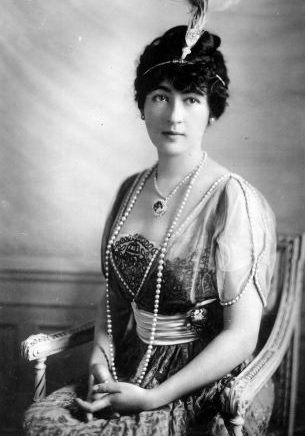The Edwardian period, named for King Edward VII of Great Britain, refers to the period between 1880 and 1915. During this time, Edward and his wife, the Danish Princess Alexandra, dominated English society, setting standards of dress, jewelry and etiquette.
In jewelry, the Edwardian style is characterized by the use of platinum, diamonds and pearls, especially the long rope or sautoir (soh-twahr).
At the turn of the century, pearls, including freshwater pearls, were a relatively rare commodity. Although the process for culturing pearls had just been invented, they would not be commercially available for another two decades.
Every wealthy Edwardian woman had at least one strand of fine natural pearls. At her coronation in 1902, Queen Alexandra wore several strands. Two hung from around her neck, while others were pinned at either side of her bodice to cascade down the front.
The American heiress Evalyn Walsh McLean, who owned the Hope Diamond and the Star of the East diamond, favored sautoirs, as did Mrs. George J. Gould, a well-known American style-setter.
These long strands of pearls often hung to or below the waist. Depending on their length, they could be looped loosely once or twice around the neck, pinned with a brooch in a swag effect to one side of the bodice, or tucked into the waistband of the skirt. Often they were allowed to hang free. Multi-strands of seed pearls were sometimes twisted into a rope sautoir, called a bayadère, that terminated with elaborate jeweled tassels.
Today, of course, pearls, freshwater and saltwater, are available in quantity and at affordable prices. But it’s Interesting that the long lariats and ropes we see in abundance have such a long (no pun intended) and royal ancestry.


